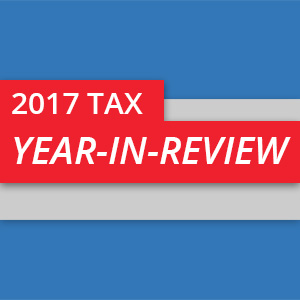
Tax Code Overhaul, Regs and Court Decisions Make 2017 Stand-Out Year
A review of the most significant developments of 2017 starts with the Tax Cuts and Jobs Act of 2017, the first major “tax reform” law enacted since 1986. In spite of its overall drive toward a “more simple tax code,” the new law has already created confusion over many of its provisions for individuals, and even more so for businesses. The provisions of the new law are generally not effective until January 1, 2018, although some reach back into late 2017. As taxpayers deal with these new rules, however, they must also address scores of other changes to the tax law that were made throughout 2017 by Congress, the IRS and the courts that directly impact the 2017 tax year. With the 2018 tax filing season coming up, knowing the impact of 2017 changes on about-to-be-filed 2017 tax-year returns is critical.
COMMENT. As 2018 begins, taxpayers and tax professionals are thrying to sort through the countless changes that have just been made by the Tax Cuts and Jobs Act. Unlike some previous years, however, the IRS enters 2018 without having to make many significant changes to 2017 tax forms in time for the upcoming 2018 filing season. Few changes in the Tax Cuts and Jobs Act are retroactive. However, the IRS must now devote resources to developing guidance unde the Tax Cuts and Jobs Act.
Major Changes
A sweeping rewrite of the nation’s tax laws passed Congress in late 2017. The Tax Cuts and Jobs Acts permanently lowers the corporate tax rate and temporarily lowers the individual tax rates. The Act also temporarily enhances the child tax credit, the medical expense deduction, bonus depreciation, small business expensing, and more. Lawmakers, however, did not repeal the federal estate tax or the alternative minimum tax (AMT) for individuals, although they did add temporary sweetners to these provisions. For more details and analysis, see the special Briefing, Tax Cuts, and Jobs Act.







